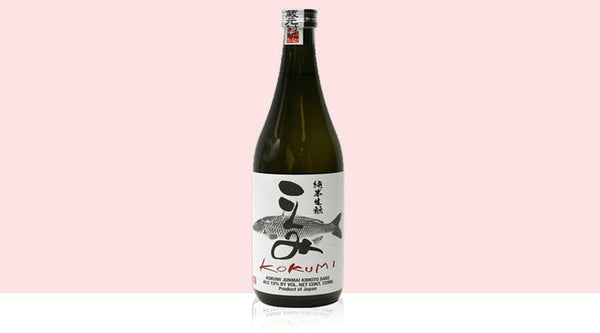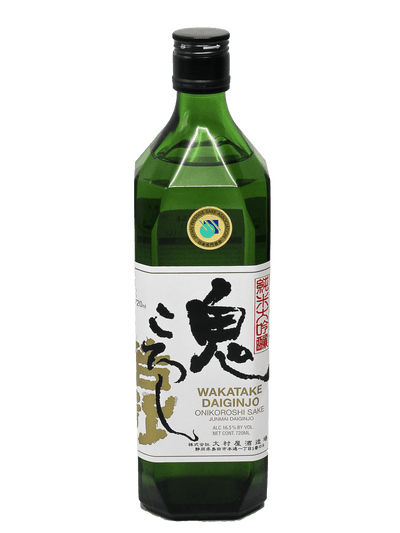Sake 101: The Varieties of Sake

All sake is made by the same basic process of fermentation using water, koji, and rice, but there are a multitude of varieties of sake based on production technique. The label will give you basic information, and feel free to ask questions when buying sake online. The Japanese National Tax Agency regulates sake; it recognizes eight premium Tokutei Meisho-Shu (Designated Special Sakes) based on strict standards that differentiate how they´re made. These sake types vary based on the minimum rice polishing ratio and whether a small amount of brewer's alcohol has been added after the fermentation process. This jozo alcohol heightens the flavor profile.
What Are Some Specific Examples of Sake Types?
Here is a list of some different sake varieties you will find and can order online:
Junmai is "pure rice" sake always made with just rice, koji, and water. A good example is Yaegaki Junmai Sake. There is no specified milling rate for Junmai, but usually the rice is polished to a minimum of 70-75%; the degree of polishing will be stated on the label. This sake is somewhat fragrant with a rich, mellow flavor. Junmai has a full body with a higher level of acidity compared to other sakes. At times, Junami is brewed to possess a dry, sweet or neutral taste. It is often served hot, though the service temperature is really a personal choice.
Junmai Kimoto refers to an ancient and specialized technique for producing the yeast starter for a sake and a good example is Kokumi Junmai Kimoto Sake, where the brewers put the basic ingredients of water, steamed rice, and koji, into very small vats. These three basic ingredients must be mixed by hand using special wooden tools several times a day. This process favors the growth of natural lactic bacteria, which are found naturally in the air, creating lactic acid critical in the Kimoto production process.
Nigori sake has not been so finely filtered as others; for example sample the Tozai Snow Maiden Junmai Nigori Sake with 70 percent seimaibuai. Nigori thus contains small rice particles and has a pleasantly sweet taste and full body. Milky in color, nigori sake resembles the sake of centuries ago before filtration processes were perfected. Generally lower in alcohol, nigori sake makes a refreshing aperitif and is best enjoyed served well-chilled.
Ginjo sakes have a minimum of 60% seimaibuai, the percentage of rice remaining after polishing, and some brewers polish their rice past 60% to achieve a smoother, cleaner style. Even though the difference between junmai and ginjo can be as little as a 10% in terms of polishing degree, noticeable changes in bouquet and flavor result. A good example is Matsuno Kotobuki Ginjo Gohyakumangoku. Junmais have subdued aromas and rich body; ginjos, by contrast, have expressive aromas of fruit and floral notes, with a softer finish. The Matsuno has a refreshing bouquet expressing pine needles, lychee, wintergreen, and pear.
Yamahai Junmai refers to a brewing method in which the yeast starter is made in a more labor-intensive manner with time devoted to lactic acid development. Try the Hojo Biden Yamahai Junmai Sake to get an idea. Like with Kimoto, this special technique imparts more pronounced flavors to the sake, including gamier notes. The Hojo Biden features greater sweetness than common sake, with an off-dry flavor balanced by 16-17% alcohol balanced the acidity from the yamahai brewing process.
Daiginjo is premium sake. It means “big” Ginjo sake and features fragrant aromas with an elegance on the palate. Daiginjo sake is made with high quality rice, often sakamai, polished to at least 50%, which is a high polishing rate. Daiginjo is slowly brewed at low temperatures and is commonly made with fragrant yeast stains, specially selected. As a premium product, the sake maker takes extra care in all the steps of production as well; this can include distinct styles of pressing, the process that separates the rice wine liquid. Daiginjos are often brewed in smaller tanks than Junmais and Ginjos, which allows greater control over temperature and thus fermentation. The critical koji ingredient is also painstakingly made; some breweries have a special room for making daiginjo koji.
Daiginjo Sake is the same as Junmai Daiginjo except a small amount of distilled brewer's alcohol is added to the sake to achieve different flavor profiles. Junamai Daiginjo generally features deeper flavors with an emphasis on fruity notes, making it a bit more nuanced sake. For example, sample the Mu Junmai Daiginjyo Sake by ordering this rice wine online!
Honjozo is a premium sake in which a small amount of brewer's alcohol his added during the moromi (main fermentation mash) stage to adjust and enhance flavors. A good example is the Gunma Izumi Honjozo Sake, which offers plenty of umami including aromas of mushrooms, cashews, and lilacs alongside flavors of peaches and minerals with hints of caramel and cocoa. For standard Honjozo sake, the rice must be milled to at least 70%. For Tokubetsu (special) Honjozo, the rice must either be milled to 60% or the sake must be brewed with a special premium brewing method. The term Honjozo distinguishes this premium sake from other sakes that contain added non-premium alcohol added simply to increase volume.
Namazume is a sake variety that is pasteurized once before cellaring, but never a second time before it is bottled. An example is the Jozen Hiyaoroshi Junmai Ginjo Namazume Sake.
In addition to a curated selection of wines from California and the world, Bottle Barn is the perfect place to start your sake journey!


















Leave a comment